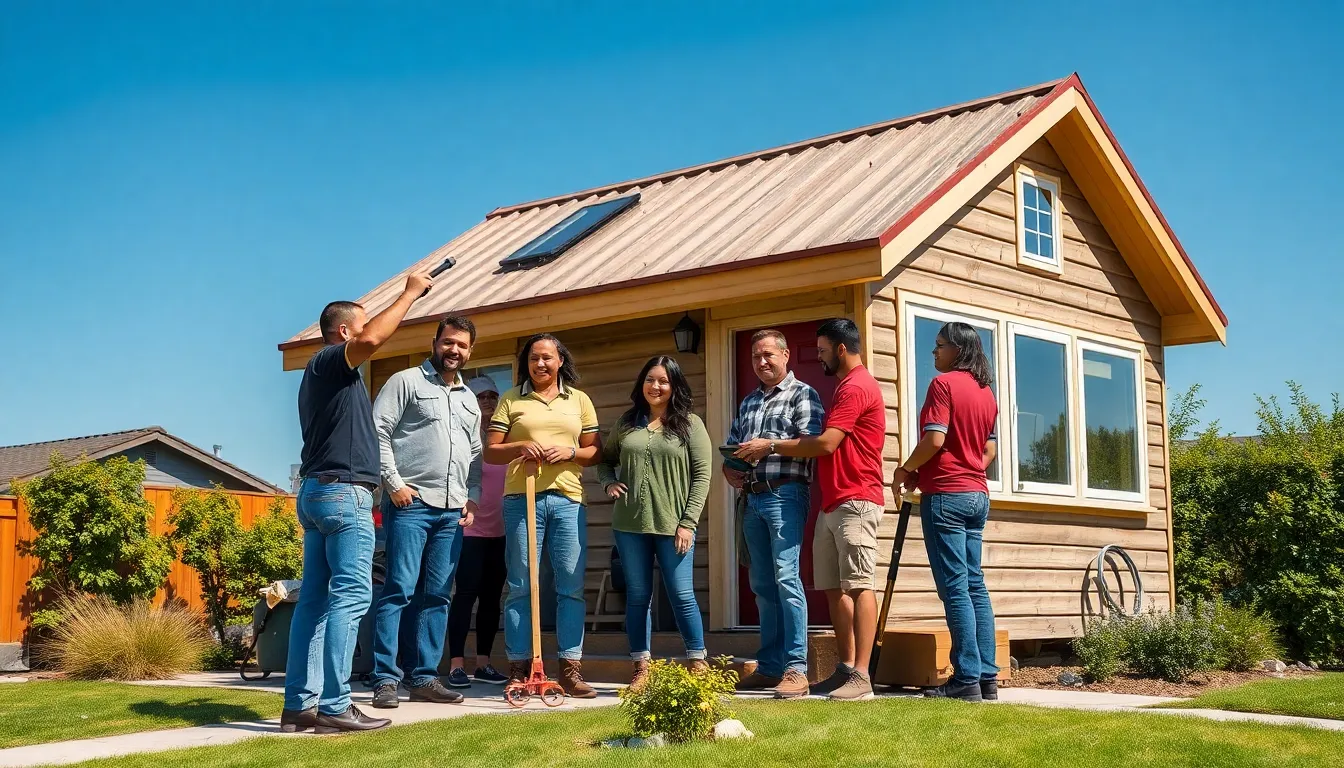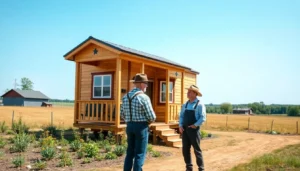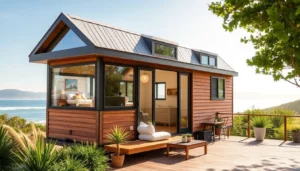Table of Contents
ToggleLiving in a tiny house is like having a cozy nest where every square inch counts. But just like any home, these pint-sized wonders need a little TLC to keep them in tip-top shape. Imagine your tiny abode as a quirky pet that requires regular grooming and care; neglect it, and you might find yourself in a sticky situation—literally!
Overview of Tiny House Maintenance
Tiny house maintenance demands attention to detail and regular upkeep. Homeowners should conduct monthly inspections to identify potential issues early. Roofs, gutters, and siding require special care due to limited space. Cleaning these areas prevents water damage and rot.
Some key components, such as plumbing and electrical systems, need consistent checks to ensure safety. Inspecting for leaks or faulty wiring can save costly repairs later. Additionally, maintenance schedules for appliances help prolong their lifespan. Regular cleaning, testing, and servicing keep appliances running efficiently.
Moisture control plays a significant role in tiny house maintenance. Ventilation systems require regular cleaning to prevent mold and mildew growth. Homeowners can also use dehumidifiers to manage humidity levels effectively. Preventing moisture-related issues contributes to a comfortable living environment.
Exterior maintenance is just as important. Periodic painting protects wood and metal from the elements. Homeowners should choose weather-resistant materials to enhance durability. Landscaping also necessitates attention, as overgrown plants can create drainage issues.
Investing in tiny house maintenance not only enhances comfort but also increases property value. By prioritizing upkeep, owners create a welcoming atmosphere. Forming a maintenance routine helps sustain the unique charm of tiny living.
Essential Maintenance Tasks
Regular maintenance keeps a tiny house functioning efficiently and preserves its charm. Homeowners must stay proactive with tasks to prevent larger issues.
Interior Maintenance
Conduct monthly inspections of plumbing systems to catch leaks early. Checking electrical systems every few months enhances safety and performance. Cleaning appliances, including air purifiers, extends their lifespan significantly. For optimal indoor air quality, replace ventilation filters regularly. Mold growth can occur quickly, so monitoring humidity levels is crucial. Utilizing dehumidifiers in high-moisture areas helps prevent unwanted issues. Maintaining storage areas also keeps spaces organized and accessible.
Exterior Maintenance
Inspect the roof biannually for damage or debris accumulation. Cleaning gutters regularly prevents clogs and ensures proper water flow. Applying paint or sealant every few years protects the home’s exterior from harsh weather. Keep pathways clear of leaves and debris to promote drainage and avoid moisture buildup. Landscaping efforts not only improve the aesthetic but also protect the foundation from erosion. Regularly evaluating windows and doors for seals ensures energy efficiency and comfort inside.
Common Issues in Tiny Houses
Tiny houses, while charming, can encounter specific maintenance challenges that require attention. Understanding these issues helps homeowners maintain their cozy spaces effectively.
Plumbing Problems
Leakage often occurs in tiny house plumbing systems due to compact spaces and limited accessibility. Homeowners should inspect pipes regularly for visible signs of wear or corrosion. Clogs can develop quickly, especially in kitchen sinks and shower drains. Regularly cleaning these areas prevents blockages and maintains functionality. Additionally, water pressure should be monitored to prevent excessive strain on plumbing fixtures. Performing seasonal checks can identify early signs of leaks or broken seals. Having a professional plumber evaluate the system annually can catch underlying issues before they escalate into costly repairs.
Electrical Issues
Electrical wiring may pose challenges in tiny houses due to space constraints. Overloaded circuits can lead to power outages or even electrical fires. Homeowners should avoid using multiple high-wattage appliances simultaneously to reduce risks. Regular inspections of electrical panels help maintain safety and identify potential hazards. It’s essential to check outlets and switches for signs of wear or malfunction. Homeowners must ensure smoke detectors and carbon monoxide detectors are functional at all times. Expanding the electrical capacity might be necessary for new appliances, and consulting a licensed electrician ensures compliance with safety standards.
Seasonal Maintenance Tips
Seasonal maintenance helps ensure a tiny house remains functional and cozy year-round. Following these guidelines enables homeowners to address specific needs for each season.
Summer Preparations
Inspect air conditioning units to confirm they operate efficiently. Clean filters and schedule professional servicing if necessary. Check outdoor connections for plumbing systems, ensuring there are no leaks. Trim surrounding vegetation to allow sunlight to reach the home and boost air circulation. Treat the exterior wood surfaces with UV protection to prevent sun damage. Finally, declutter outdoor spaces to promote easy access and maintain aesthetic appeal.
Winter Readiness
Winterization involves protecting pipes from freezing. Insulate exposed plumbing with foam covers or heat tape. Inspect heating systems to confirm they function correctly, and clean or replace filters. Seal drafts around windows and doors using weather stripping to enhance energy efficiency. Ensure the tiny house has sufficient supplies like blankets and portable heaters. Clearing gutters of debris helps prevent ice dam formation and water damage. Addressing these tasks promotes a warm, safe environment during cold months.
Conclusion
Tiny house maintenance is essential for preserving the charm and functionality of these compact living spaces. By dedicating time to regular inspections and upkeep, homeowners can prevent costly repairs and ensure a safe environment.
Implementing a proactive maintenance schedule not only enhances comfort but also contributes to the overall value of the property. Staying vigilant against common issues like plumbing and electrical challenges is crucial for a hassle-free living experience.
With seasonal tasks and a focus on moisture control, tiny house owners can create a welcoming atmosphere year-round. Embracing these maintenance practices will lead to a happier and healthier tiny living experience.








